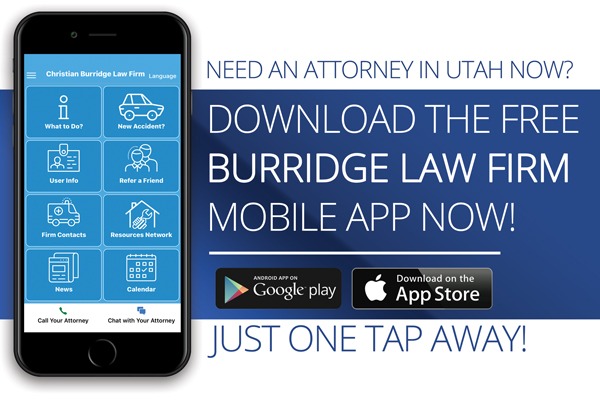As experienced personal injury attorneys in Utah, we often encounter cases involving both negligence and recklessness. Understanding the distinction between these legal concepts and their impact on the Utah statute of limitations for personal injury is crucial for anyone considering filing a personal injury lawsuit in Utah.
Defining Negligence and Recklessness
Negligence
Negligence occurs when someone fails to exercise reasonable care, resulting in harm to another person. It’s often described as carelessness or thoughtlessness.
Recklessness
Recklessness, on the other hand, involves a conscious disregard for a known risk. It’s a step beyond negligence, where the person is aware of the potential danger but chooses to act anyway.
Key Differences Between Negligence and Recklessness
- Level of Awareness: Negligence involves a lack of awareness or care, while recklessness involves a conscious disregard for risk.
- Severity of Conduct: Reckless behavior is generally considered more serious than negligent behavior.
- Potential for Punitive Damages: Reckless conduct is more likely to result in punitive damages.
Statute of Limitations for Negligence Cases in Utah
The general Utah statute of limitations for personal injury cases based on negligence is four years from the date of the injury. This applies to most types of negligence cases, including:
- Car accidents
- Slip and fall incidents
- General personal injury claims
Statute of Limitations for Recklessness Cases in Utah
Interestingly, the statute of limitations for recklessness cases in Utah is typically the same as for negligence cases: four years from the date of the injury. However, there are some important considerations:
- Intentional Torts: If the reckless behavior is deemed to be an intentional tort, the statute of limitations may be shorter (one year in Utah).
- Criminal Cases: If the reckless behavior also constitutes a crime, the statute of limitations for the criminal case may be different from the civil case.
Special Considerations for Statutes of Limitation
Medical Malpractice
The medical malpractice deadlines in Utah are generally two years from discovery, but no more than four years from the incident, regardless of whether the case involves negligence or recklessness.
Wrongful Death
If either negligence or recklessness results in death, the wrongful death claim Utah timeline is two years from the date of death.
Claims Against Government Entities
For both negligence and recklessness claims against government entities, you must file a notice of claim within one year, and the lawsuit must be filed within one year after the claim is denied.
Impact of Recklessness on Personal Injury Cases
While the statute of limitations may be the same, proving recklessness can have significant impacts on a personal injury case:
- Stronger Case: Recklessness often makes for a more compelling case than simple negligence.
- Higher Damages: Juries may award higher damages for reckless conduct.
- Punitive Damages: Unlike most negligence cases, recklessness may justify punitive damages.
- Insurance Coverage: Some insurance policies may not cover reckless acts, potentially impacting recovery.
The Importance of Timely Action
Regardless of whether your case involves negligence or recklessness, it’s crucial to act promptly:
- Preserve Evidence: Acting quickly helps ensure crucial evidence is preserved.
- Witness Testimony: Witnesses’ memories remain fresher when cases are filed promptly.
- Maximize Recovery: Timely action can help maximize your potential recovery.
Steps to Take if You’ve Been Injured
Whether you believe you’ve been injured due to negligence or recklessness:
- Seek medical attention immediately.
- Document everything related to the incident and your injuries.
- Gather any available evidence (photos, witness contact information, etc.).
- Consult with a personal injury attorney as soon as possible.
The Role of an Experienced Attorney
Navigating the distinctions between negligence and recklessness, and ensuring you file within the Utah statute of limitations for personal injury, can be complex. An experienced attorney can:
- Evaluate whether your case involves negligence or recklessness.
- Gather and preserve crucial evidence.
- Ensure all necessary documentation is filed within the appropriate timeframes.
- Advocate for maximum compensation based on the specifics of your case.
Conclusion
While the statute of limitations may be the same for many negligence and recklessness cases in Utah, understanding the distinction between these concepts is crucial for building a strong personal injury case. If you believe you’ve been injured due to someone else’s negligence or recklessness, don’t wait to seek legal advice.
Contact our experienced team of personal injury attorneys today for a free consultation. We’ll help you understand your rights, evaluate your case, and ensure your claim is filed within the appropriate timeframe, whether you’re filing a personal injury lawsuit in Utah based on negligence or recklessness.
Remember, when it comes to personal injury claims and the Utah statute of limitations for personal injury, time is of the essence. Don’t delay in seeking the compensation you deserve.
Keywords: Utah statute of limitations personal injury, Filing personal injury lawsuit Utah, Medical malpractice deadlines Utah, Wrongful death claim Utah timeline, Government immunity injury claims Utah



